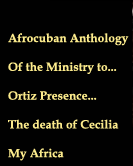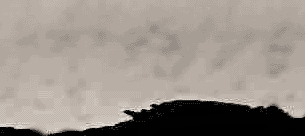




THE NIÑA CECILIA'S DEATH
The fights of Stick Mount -Regla
Bruja - against the racism and the poverty
Author:
Jorge Luis Rodríguez
Stage
Of The Arts, Inc.
The
Ángeles, CA RESUMEE: The Bantu one (towns of the old Congo) they represent most of the slaves entering to Cuba during the XVII century and principles of the XVIII one. After the trate about slaves it became illegal, the Yorubas (towns of Nigeria and old el Calabar) they became the main group of slaves arriving to Cuba. The sincretismo of the religion Yoruba and the saints of the Catholic Church created a commitment social called " santería ", which was accepted by the Christendom during the Republic and sponsored after 1959 as folkloric value and cultural patrimony of the Cuban town. But symbiosis doesn't exist between the Christendom and the pioneers of the Bantu groups; the Paleros believes in a Supreme God and Creator of the Universe but the theology conga works with mpungos (you force intangible) that are not antropomórficas like the Orichas. While the Santería is accepted in the Cuban society, the Witchcraft of the African magicians is still considered a diabolical practice. The county of Matanzas, Cuba, represents the biggest congregation in the religiosity of Palo Monte. On Sunday 22 of June of 1919 in the City of Matanzas, a three year-old girl, Cecilia Dalcourt, strayed in the streets. The press and the police coincided when affirming that Cecilia was kidnapped and sacrificed by the sorcerers. Afro-Cuban supposedly practitioners of Stick were imprisoned. The Dr. Armando Carnot, mayor of the City, was accused of working with the sorcerers and the crowd rioted in the gentle town. That bloody night of June, the guards of the Castle of San Severino opened fire. Eighty years later, the mystery of the Niña Cecilia is still alive . During 1997 and 1998 drove field studies in Matanzas, Cuba, including newspapers of the years 20's, you interview with paleros and cause testimoniantes. The tomb of the Niña Cecilia was open and the remains studied by a forensic doctor. The supposed body of the crime was a fetus in fact.
Anyone in the City of Matanzas knew that in eves of the day 24 of June, summer solstice, Catholic calendar of San Juan; it should not be left alone to the children. It always existed the possibility that some black sorcerer came to be stolen some boy. I grew playing to the marbles and the kimbumbia in the street Zaragoza, and by force of point to make rotate the glass pellets on that street, we learned how to recognize the bananas of Changó and the bags with witchcraft. In a corner was the First Iglesia Bautista that was founded in 1895, in the other corner it was mortuary Torres. So the block was good to deposit all magic luck and sorcery there where they join all the incantations: in the four corners. Remains silent River (Tello Lamar remains silent they baptized her then). To a couple of blocks the river runs San Juan and walking in opposed address you arrives at once at Rolando Teruel Cartaya house, founder of The Union, the union that fought to win social rights for the black workers during the Republic. Rolando is now 92 years old and he is grandson of Remigio Herrera (Addé Chinva) who it introduced the drums batá in Matanzas and it began to the first babalao (priest of Ifá) Cuban December 3 1872. The asphalt had not Still covered the centennial paving stones neither the granite sidewalks had remplazado all the big flagstones of black stone. It was San Juan's day and I wanted to leave to the street River to play with the grocer's children. Then I was three years old and my mother didn't have left it more remedy than to explain eats up to that same age the girl it had disappeared in that same street Cecilia. Chapters
1-La press and the Sorcerers of this century. 2-The
events of 1919 in Matanzas.
|






